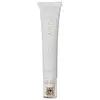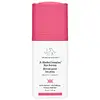What's inside
What's inside
 Key Ingredients
Key Ingredients

 Benefits
Benefits

 Concerns
Concerns

 Ingredients Side-by-side
Ingredients Side-by-side

Water
Skin ConditioningCaprylic/Capric Triglyceride
MaskingCetearyl Alcohol
EmollientHydrogenated Polydecene
EmollientStearic Acid
CleansingGlycerin
HumectantDicaprylyl Carbonate
EmollientMannitol
HumectantPolysilicone-11
Ceteareth-20
CleansingNiacinamide
SmoothingPolymethylsilsesquioxane
Phenoxyethanol
PreservativePanthenol
Skin ConditioningPersea Gratissima Oil
Skin ConditioningSilk Amino Acids
HumectantButylene Glycol
HumectantHibiscus Sabdariffa Flower Extract
Skin ConditioningCucumis Sativus Seed Extract
Skin ConditioningCaprylyl Glycol
EmollientLaureth-12
EmulsifyingAllantoin
Skin ConditioningMorus Alba Bark Extract
Skin ConditioningSodium Gluconate
Skin ConditioningCitric Acid
BufferingPyruvic Acid
MaskingAlcohol Denat.
AntimicrobialSodium Benzoate
MaskingPotassium Sorbate
PreservativeSodium Citrate
BufferingEthylhexylglycerin
Skin ConditioningMicrocitrus Australasica Fruit Extract
Dextrin
AbsorbentDisodium Phosphate
BufferingFerulic Acid
AntimicrobialWaltheria Indica Leaf Extract
Skin ConditioningSodium Phosphate
BufferingAcetyl Tetrapeptide-5
HumectantDiamond Powder
AbrasiveSorbic Acid
PreservativeAcetyl Hexapeptide-51 Amide
Skin ConditioningAcetyl Hexapeptide-8
HumectantAcetyl Octapeptide-3
HumectantWater, Caprylic/Capric Triglyceride, Cetearyl Alcohol, Hydrogenated Polydecene, Stearic Acid, Glycerin, Dicaprylyl Carbonate, Mannitol, Polysilicone-11, Ceteareth-20, Niacinamide, Polymethylsilsesquioxane, Phenoxyethanol, Panthenol, Persea Gratissima Oil, Silk Amino Acids, Butylene Glycol, Hibiscus Sabdariffa Flower Extract, Cucumis Sativus Seed Extract, Caprylyl Glycol, Laureth-12, Allantoin, Morus Alba Bark Extract, Sodium Gluconate, Citric Acid, Pyruvic Acid, Alcohol Denat., Sodium Benzoate, Potassium Sorbate, Sodium Citrate, Ethylhexylglycerin, Microcitrus Australasica Fruit Extract, Dextrin, Disodium Phosphate, Ferulic Acid, Waltheria Indica Leaf Extract, Sodium Phosphate, Acetyl Tetrapeptide-5, Diamond Powder, Sorbic Acid, Acetyl Hexapeptide-51 Amide, Acetyl Hexapeptide-8, Acetyl Octapeptide-3
Water
Skin ConditioningOctyldodecanol
EmollientGlycerin
HumectantBoron Nitride
AbsorbentCaffeine
Skin ConditioningSaccharomyces/Xylinum/Black Tea Ferment
Skin ConditioningCoconut Alkanes
EmollientCetyl Alcohol
EmollientCetearyl Olivate
Sorbitan Olivate
EmulsifyingNiacinamide
SmoothingMangifera Indica Seed Butter
Skin ConditioningHippophae Rhamnoides Oil
EmollientBis(Tripeptide-1) Copper Acetate
Skin ConditioningCaprylic/Capric Triglyceride
MaskingSclerocarya Birrea Seed Oil
HumectantDipeptide-2
Skin ConditioningPalmitoyl Tripeptide-1
Skin ConditioningPalmitoyl Tetrapeptide-7
Skin ConditioningCopper Lysinate/Prolinate
Skin ConditioningHesperidin Methyl Chalcone
AntioxidantGlycine Soja Oil
EmollientSodium Hyaluronate Crosspolymer
HumectantHydroxyethylcellulose
Emulsion StabilisingGlucose
HumectantBiotin
AntiseborrhoeicMethylglucoside Phosphate
Skin ConditioningRetinol
Skin ConditioningCeramide NP
Skin ConditioningTrideceth-6 Phosphate
EmulsifyingCoco-Caprylate/Caprate
EmollientLecithin
EmollientCetyl Palmitate
EmollientPanthenol
Skin ConditioningLeontopodium Alpinum Meristem Cell Culture
Skin ConditioningN-Hydroxysuccinimide
Skin ConditioningUbiquinone
AntioxidantCitric Acid
BufferingChondrus Crispus Extract
Skin ConditioningSteareth-20
CleansingThioctic Acid
AntioxidantTocopherol
AntioxidantChrysin
Skin ConditioningSclerotium Gum
Emulsion StabilisingSodium Citrate
BufferingPolysorbate 20
EmulsifyingXanthan Gum
EmulsifyingPotassium Sorbate
PreservativeLaureth-23
CleansingSodium Benzoate
MaskingChlorphenesin
AntimicrobialCaprylyl Glycol
EmollientSodium Hydroxide
BufferingSodium Carbonate
BufferingPhenoxyethanol
PreservativeSodium Chloride
MaskingChlorhexidine Digluconate
AntimicrobialPentylene Glycol
Skin ConditioningEthylhexylglycerin
Skin ConditioningWater, Octyldodecanol, Glycerin, Boron Nitride, Caffeine, Saccharomyces/Xylinum/Black Tea Ferment, Coconut Alkanes, Cetyl Alcohol, Cetearyl Olivate, Sorbitan Olivate, Niacinamide, Mangifera Indica Seed Butter, Hippophae Rhamnoides Oil, Bis(Tripeptide-1) Copper Acetate, Caprylic/Capric Triglyceride, Sclerocarya Birrea Seed Oil, Dipeptide-2, Palmitoyl Tripeptide-1, Palmitoyl Tetrapeptide-7, Copper Lysinate/Prolinate, Hesperidin Methyl Chalcone, Glycine Soja Oil, Sodium Hyaluronate Crosspolymer, Hydroxyethylcellulose, Glucose, Biotin, Methylglucoside Phosphate, Retinol, Ceramide NP, Trideceth-6 Phosphate, Coco-Caprylate/Caprate, Lecithin, Cetyl Palmitate, Panthenol, Leontopodium Alpinum Meristem Cell Culture, N-Hydroxysuccinimide, Ubiquinone, Citric Acid, Chondrus Crispus Extract, Steareth-20, Thioctic Acid, Tocopherol, Chrysin, Sclerotium Gum, Sodium Citrate, Polysorbate 20, Xanthan Gum, Potassium Sorbate, Laureth-23, Sodium Benzoate, Chlorphenesin, Caprylyl Glycol, Sodium Hydroxide, Sodium Carbonate, Phenoxyethanol, Sodium Chloride, Chlorhexidine Digluconate, Pentylene Glycol, Ethylhexylglycerin
Ingredients Explained
These ingredients are found in both products.
Ingredients higher up in an ingredient list are typically present in a larger amount.
This ingredient is an emollient, solvent, and texture enhancer. It is considered a skin-softener by helping the skin prevent moisture loss.
It helps thicken a product's formula and makes it easier to spread by dissolving clumping compounds.
Caprylic Triglyceride is made by combining glycerin with coconut oil, forming a clear liquid.
While there is an assumption Caprylic Triglyceride can clog pores due to it being derived from coconut oil, there is no research supporting this.
Learn more about Caprylic/Capric TriglycerideCaprylyl Glycol is a humectant and emollient, meaning it attracts and preserves moisture.
It is a common ingredient in many products, especially those designed to hydrate skin. The primary benefits are retaining moisture, skin softening, and promoting a healthy skin barrier.
Though Caprylyl Glycol is an alcohol derived from fatty acids, it is not the kind that can dry out skin.
This ingredient is also used as a preservative to extend the life of products. It has slight antimicrobial properties.
Learn more about Caprylyl GlycolCitric Acid is an alpha hydroxy acid (AHA) naturally found in citrus fruits like oranges, lemons, and limes.
Like other AHAs, citric acid can exfoliate skin by breaking down the bonds that hold dead skin cells together. This helps reveal smoother and brighter skin underneath.
However, this exfoliating effect only happens at high concentrations (20%) which can be hard to find in cosmetic products.
Due to this, citric acid is usually included in small amounts as a pH adjuster. This helps keep products slightly more acidic and compatible with skin's natural pH.
In skincare formulas, citric acid can:
While it can provide some skin benefits, research shows lactic acid and glycolic acid are generally more effective and less irritating exfoliants.
Most citric acid used in skincare today is made by fermenting sugars (usually from molasses). This synthetic version is identical to the natural citrus form but easier to stabilize and use in formulations.
Read more about some other popular AHA's here:
Learn more about Citric AcidEthylhexylglycerin (we can't pronounce this either) is commonly used as a preservative and skin softener. It is derived from glyceryl.
You might see Ethylhexylglycerin often paired with other preservatives such as phenoxyethanol. Ethylhexylglycerin has been found to increase the effectiveness of these other preservatives.
Glycerin is already naturally found in your skin. It helps moisturize and protect your skin.
A study from 2016 found glycerin to be more effective as a humectant than AHAs and hyaluronic acid.
As a humectant, it helps the skin stay hydrated by pulling moisture to your skin. The low molecular weight of glycerin allows it to pull moisture into the deeper layers of your skin.
Hydrated skin improves your skin barrier; Your skin barrier helps protect against irritants and bacteria.
Glycerin has also been found to have antimicrobial and antiviral properties. Due to these properties, glycerin is often used in wound and burn treatments.
In cosmetics, glycerin is usually derived from plants such as soybean or palm. However, it can also be sourced from animals, such as tallow or animal fat.
This ingredient is organic, colorless, odorless, and non-toxic.
Glycerin is the name for this ingredient in American English. British English uses Glycerol/Glycerine.
Learn more about GlycerinNiacinamide is a multitasking form of vitamin B3 that strengthens the skin barrier, reduces pores and dark spots, regulates oil, and improves signs of aging.
And the best part? It's gentle and well-tolerated by most skin types, including sensitive and reactive skin.
You might have heard of "niacin flush", or the reddening of skin that causes itchiness. Niacinamide has not been found to cause this.
In very rare cases, some individuals may not be able to tolerate niacinamide at all or experience an allergic reaction to it.
If you are experiencing flaking, irritation, and dryness with this ingredient, be sure to double check all your products as this ingredient can be found in all categories of skincare.
When incorporating niacinamide into your routine, look out for concentration amounts. Typically, 5% niacinamide provides benefits such as fading dark spots. However, if you have sensitive skin, it is better to begin with a smaller concentration.
When you apply niacinamide to your skin, your body converts it into nicotinamide adenine dinucleotide (NAD). NAD is an essential coenzyme that is already found in your cells as "fuel" and powers countless biological processes.
In your skin, NAD helps repair cell damage, produce new healthy cells, support collagen production, strengthen the skin barrier, and fight environmental stressors (like UV and pollution).
Our natural NAD levels start to decline with age, leading to slower skin repair, visible aging, and a weaker skin barrier. By providing your skin niacinamide, you're recharging your skin's NAD levels. This leads to stronger, healthier, and younger looking skin.
Another name for vitamin B3 is nicotinamide. This vitamin is water-soluble and our bodies don't store it. We obtain Vitamin B3 from either food or skincare. Meat, fish, wheat, yeast, and leafy greens contain vitamin B3.
The type of niacinamide used in skincare is synthetically created.
Learn more about NiacinamidePanthenol is a common ingredient that helps hydrate and soothe the skin. It is found naturally in our skin and hair.
There are two forms of panthenol: D and L.
D-panthenol is also known as dexpanthenol. Most cosmetics use dexpanthenol or a mixture of D and L-panthenol.
Panthenol is famous due to its ability to go deeper into the skin's layers. Using this ingredient has numerous pros (and no cons):
Like hyaluronic acid, panthenol is a humectant. Humectants are able to bind and hold large amounts of water to keep skin hydrated.
This ingredient works well for wound healing. It works by increasing tissue in the wound and helps close open wounds.
Once oxidized, panthenol converts to pantothenic acid. Panthothenic acid is found in all living cells.
This ingredient is also referred to as pro-vitamin B5.
Learn more about PanthenolPhenoxyethanol is a preservative that has germicide, antimicrobial, and aromatic properties. Studies show that phenoxyethanol can prevent microbial growth. By itself, it has a scent that is similar to that of a rose.
It's often used in formulations along with Caprylyl Glycol to preserve the shelf life of products.
Potassium Sorbate is a preservative used to prevent yeast and mold in products. It is commonly found in both cosmetic and food products.
This ingredient comes from potassium salt derived from sorbic acid. Sorbic acid is a natural antibiotic and effective against fungus.
Both potassium sorbate and sorbic acid can be found in baked goods, cheeses, dried meats, dried fruit, ice cream, pickles, wine, yogurt, and more.
You'll often find this ingredient used with other preservatives.
Learn more about Potassium SorbateSodium Benzoate is a preservative. It's used in both cosmetic and food products to inhibit the growth of mold and bacteria. It is typically produced synthetically.
Both the US FDA and EU Health Committee have approved the use of sodium benzoate. In the US, levels of 0.1% (of the total product) are allowed.
Sodium benzoate works as a preservative by inhibiting the growth of bacteria inside of cells. It prevents the cell from fermenting a type of sugar using an enzyme called phosphofructokinase.
It is the salt of benzoic acid. Foods containing sodium benzoate include soda, salad dressings, condiments, fruit juices, wines, and snack foods.
Studies for using ascorbic acid and sodium benzoate in cosmetics are lacking, especially in skincare routines with multiple steps.
We always recommend speaking with a professional, such as a dermatologist, if you have any concerns.
Learn more about Sodium BenzoateSodium Citrate is the sodium salts of citric acid. In skincare, it is used to alter pH levels and acts as a preservative.
Its main functions are to maintain the pH of a product and neutralize metal ions.
The acidity of our skin is maintained by our glands and skin biome; normal pH level of skin is slightly acidic (~4.75-5.5).
Being slightly acidic allows our skin to create an "acid mantle". This acid mantle is a thin barrier that protects our skin from bacteria and contaminants.
Learn more about Sodium CitrateWater. It's the most common cosmetic ingredient of all. You'll usually see it at the top of ingredient lists, meaning that it makes up the largest part of the product.
So why is it so popular? Water most often acts as a solvent - this means that it helps dissolve other ingredients into the formulation.
You'll also recognize water as that liquid we all need to stay alive. If you see this, drink a glass of water. Stay hydrated!
Learn more about Water